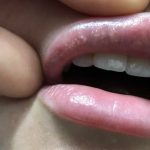The 7 Dangers of Facial Injections

In the pursuit of eternal youth and aesthetic perfection, facial injections have become a prevalent and accessible means to enhance one’s appearance. From dermal fillers to Botox injections, these cosmetic procedures promise to smooth wrinkles, restore volume, and rejuvenate the skin. Facial fillers in particular have become very popular, with Google trends showing a 31.3 percent increase in the product’s use over the past couple of years.
However, beneath the allure of a youthful visage lie potential dangers that warrant a closer examination. In this comprehensive article, we will delve into the various types of facial injections, explore the associated risks and complications, and discuss the importance of informed decision-making in the realm of cosmetic procedures.
Understanding Facial Injections
Facial injections encompass a spectrum of cosmetic procedures designed to address various concerns related to facial aging, asymmetry, and volume loss. The two primary categories of facial injections are dermal fillers and neurotoxin injections.
1. Dermal Fillers: Dermal fillers are injectable substances that add volume to targeted areas, effectively reducing the appearance of wrinkles, fine lines, and hollow areas. Common types of dermal fillers include hyaluronic acid, collagen, and synthetic fillers.
2. Neurotoxin Injections: Neurotoxin injections, commonly known by the brand name Botox, involve the injection of botulinum toxin to temporarily paralyze or weaken facial muscles. This results in the reduction of dynamic wrinkles, particularly those associated with facial expressions such as frowning or smiling.
While these procedures are generally considered safe when administered by qualified and experienced practitioners, it is essential to recognize and address the potential dangers associated with facial injections.
The Dangers of Facial Injections
1. Injection Site Reactions: One of the most common dangers associated with facial injections is the risk of injection site reactions. These reactions may include redness, swelling, bruising, and tenderness at the injection site. While these effects are typically temporary, they can be distressing for individuals seeking immediate results and may impact their social and professional activities.
2. Infection Risk: Any procedure involving needle penetration carries the risk of infection. Improper injection techniques, unsterile equipment, or inadequate post-injection care can lead to bacterial contamination, resulting in localized infections at the injection site. In severe cases, systemic infections may occur, posing a significant threat to overall health.
3. Allergic Reactions: Allergic reactions to the substances used in facial injections, such as hyaluronic acid or collagen, are rare but can occur. Allergies may manifest as redness, itching, hives, or even more severe reactions like anaphylaxis. It is crucial for individuals to undergo allergy testing before receiving certain types of fillers to minimize this risk.
4. Migration and Nodule Formation: Dermal fillers, especially those with a semi-permanent or permanent nature, may migrate from the injection site over time. This can lead to asymmetry and undesired changes in facial appearance. Additionally, the formation of nodules or lumps beneath the skin may occur, requiring corrective procedures or, in some cases, surgical intervention.
5. Vascular Complications: Injection procedures, if not performed with precision, carry the risk of inadvertently injecting filler into blood vessels. Vascular complications can lead to tissue necrosis, scarring, and, in extreme cases, blindness. The expertise of the practitioner and an in-depth understanding of facial anatomy are crucial in minimizing these risks.
6. Overfilling or Underfilling: Achieving the right balance in facial injections is an art that requires skill and experience. Overfilling can result in an unnatural appearance, distorting facial features, while underfilling may not provide the desired rejuvenating effect. Communication between the individual and the practitioner is essential to set realistic expectations and ensure satisfactory outcomes.
7. Long-Term Complications: Some facial injections, particularly those with semi-permanent or permanent formulations, may lead to long-term complications. As the face ages and undergoes natural changes, the initial results of the injections may become less harmonious with facial contours, necessitating additional procedures or corrections.
Mitigating the Risks
While the dangers associated with facial injections are noteworthy, it is crucial to recognize that these risks can be significantly mitigated through informed decision-making and responsible medical practices.
1. Choose a Qualified Practitioner: Selecting a qualified and experienced practitioner is paramount to minimizing risks associated with facial injections. Board-certified dermatologists, plastic surgeons, or licensed healthcare professionals with specific training in cosmetic procedures are better equipped to ensure safe and effective treatments.
2. Research and Informed Consent: Individuals considering facial injections should conduct thorough research on the chosen procedure, potential risks, and reputable practitioners. Informed consent is a critical aspect of any cosmetic procedure, and individuals must be aware of the potential dangers before deciding to undergo treatment.
3. Allergy Testing: For individuals opting for dermal fillers, particularly those with semi-permanent or permanent formulations, allergy testing is recommended. This can help identify any pre-existing allergies and prevent adverse reactions to the filler substances.
4. Use of Reversible Fillers: Opting for reversible fillers, such as hyaluronic acid-based fillers, allows for corrections or adjustments if needed. These fillers can be dissolved with specific enzymes, providing a level of reversibility that can be reassuring for individuals concerned about long-term outcomes.
5. Follow Post-Treatment Guidelines: Adhering to post-treatment guidelines provided by the practitioner is crucial for minimizing complications. This may include avoiding strenuous physical activities, refraining from certain medications, and maintaining good skincare practices.
6. Regular Follow-Up Appointments: Schedule regular follow-up appointments with the practitioner to monitor the results of the facial injections and address any concerns promptly. Monitoring long-term outcomes allows for timely adjustments or corrective measures as needed.
Conclusion
Facial injections, when performed by qualified and experienced practitioners, can be effective tools in enhancing facial aesthetics. However, the dangers associated with these procedures underscore the importance of informed decision-making, thorough research, and the need for individuals to be aware of potential risks before undergoing treatment. By understanding the complexities and risks associated with facial injections, individuals can approach cosmetic procedures with realistic expectations, prioritize safety, and work collaboratively with qualified practitioners to achieve satisfying and safe outcomes. Responsible aesthetic practices, ongoing research, and advancements in medical technology continue to play vital roles in minimizing the dangers associated with facial injections and ensuring the safety and satisfaction of individuals seeking cosmetic enhancements.





